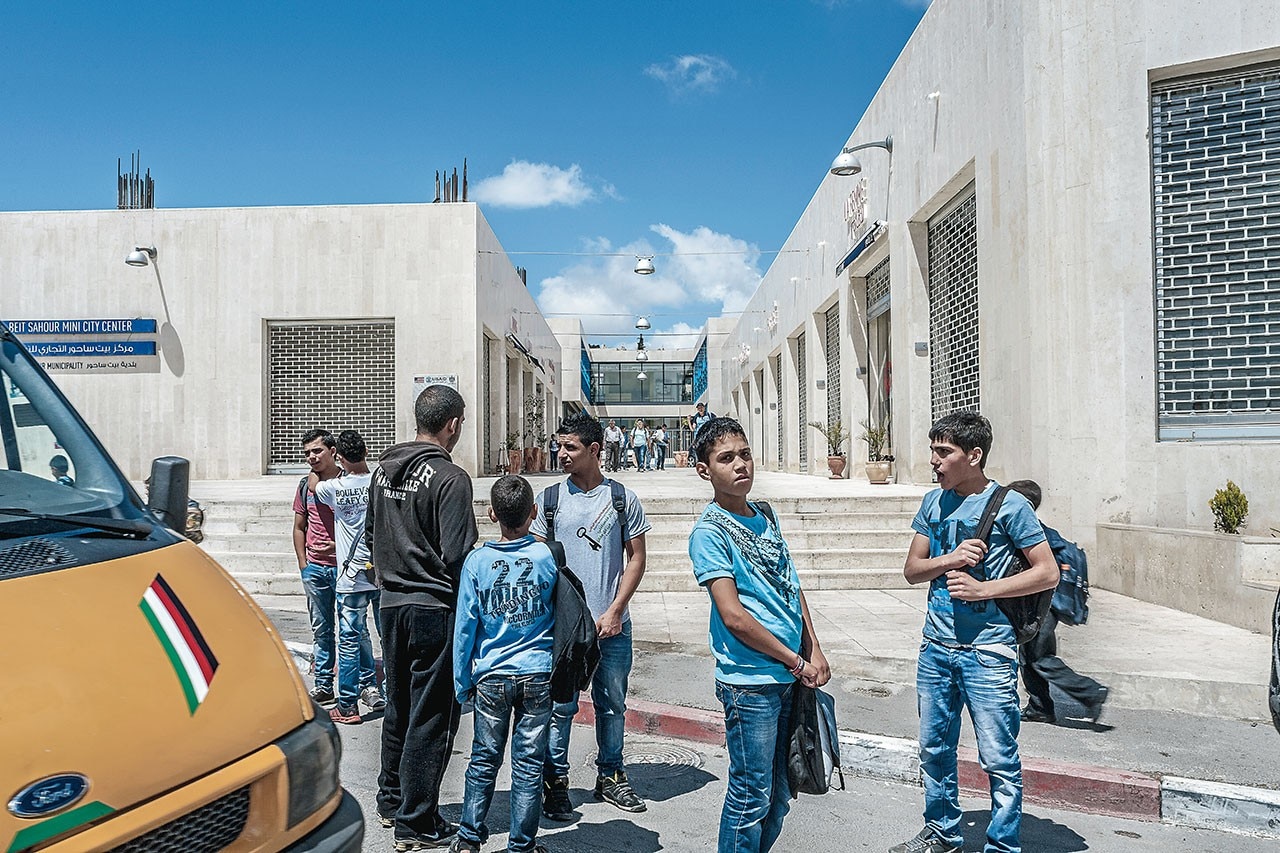This article was originally published in Domus 970/ June 2013
In the West, the notion of public space is often associated with that of a collective interest, a common good. In other cultural contexts, however, as for example in the contemporary Arab world, public space is viewed with suspicion. After years of European domination and colonisation, the public sphere has never represented a collective interest. On the contrary, it has been seen as an expression of the power of a violent, exploitative, white elite.
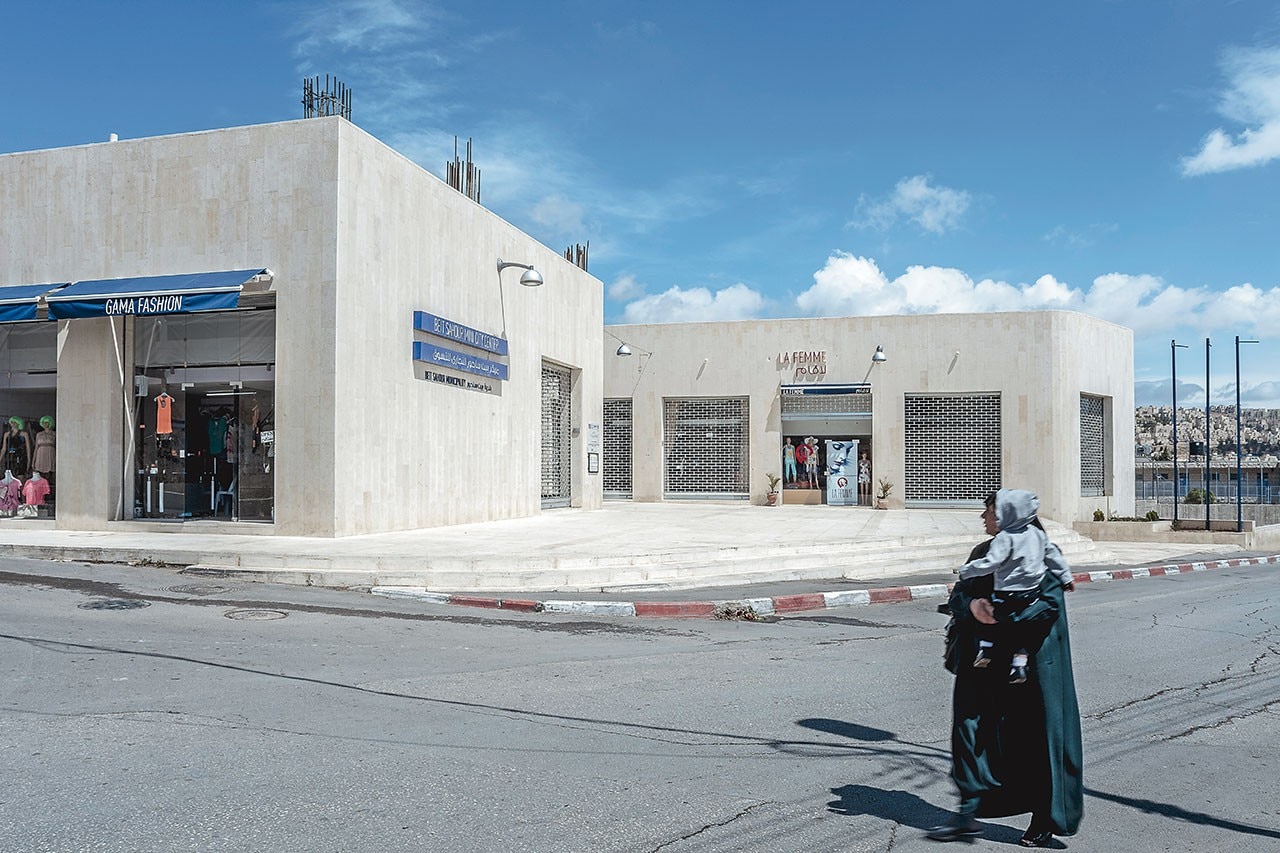
It is in the name of public space that a regime appropriates what people have in common, the expropriation of land being perhaps the most striking manifestation of how this notion is not necessarily in the interest of the people. State authorities are obsessed with the control and regulation of collective places, to the point of destroying their true nature as spaces of social communication and unplanned activities.
What scares authorities most is the possibility of transforming a square, a boulevard or an ordinary roundabout into a political scene, where people may reappropriate a sovereignty and deactivate the state machine.
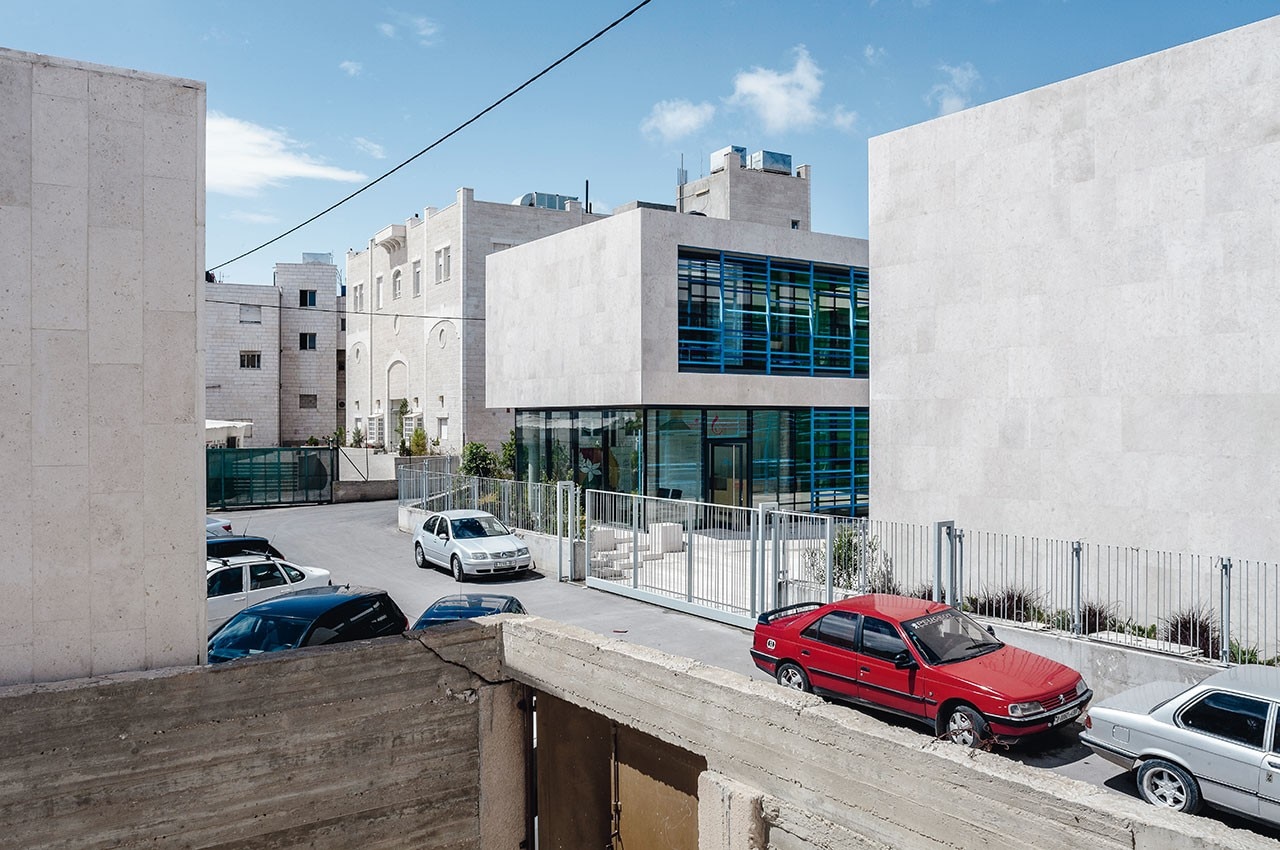
Unfortunately, many regimes in the Arab world that succeeded European colonialism have continued to suffocate the existence of common spaces, with the result that they have become equated with the bureaucratic and repressive face of power. Even the wave of neoliberalism that gained a foothold in the Arab world as of the 1990s ended up dismantling what little public space still existed.
However, the Arab revolts that erupted in 2010 opened up new political perspectives. They may also be essentially interpreted as a will to reappropriate and reconquer “public places” in the Arab world. The demonstrations in Avenue Habib Bourguiba in Tunis, the occupations of Tahrir Square in Cairo and of Pearl Roundabout in Manama are just some of the efforts to reinvent and reappropriate collective space.
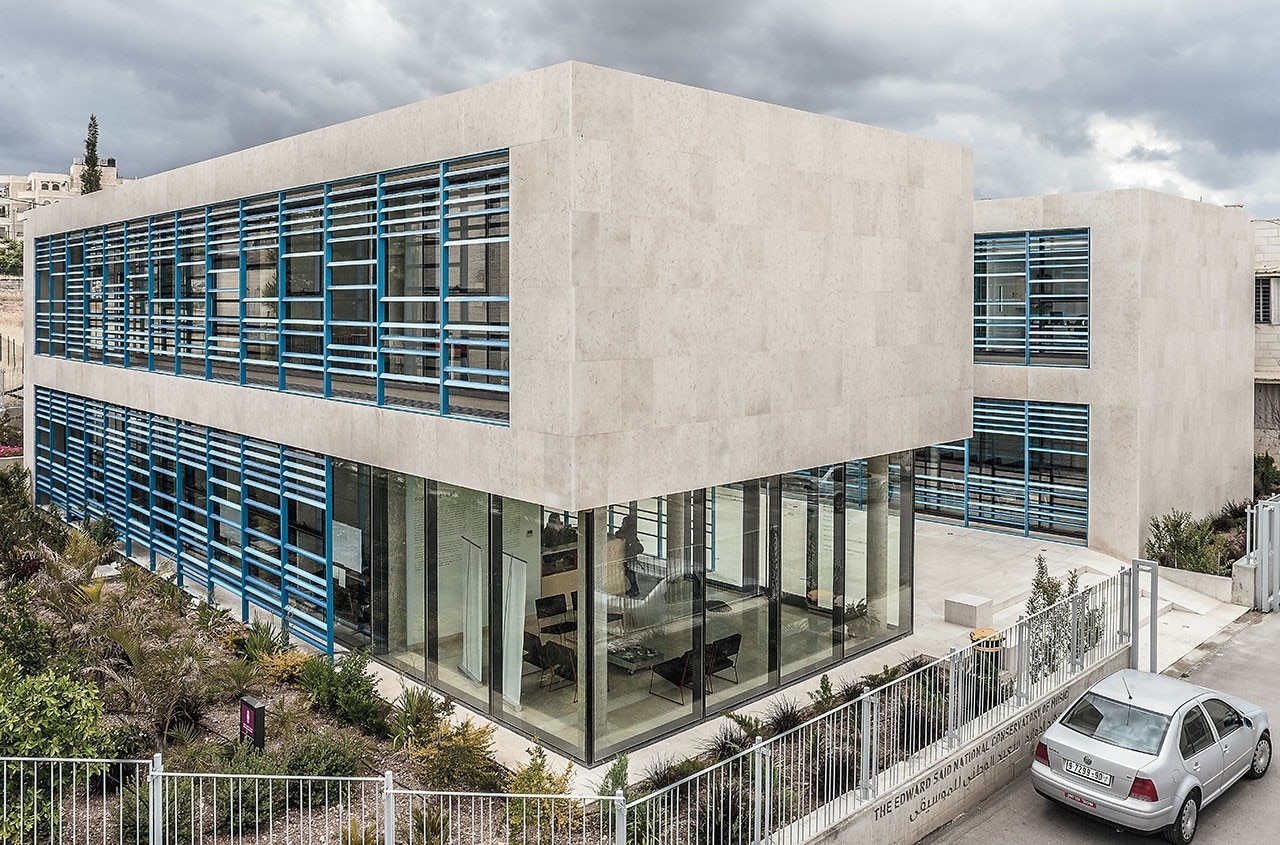
The National Conservatory project in Beit Sahour is above all an attempt to exploit the plan for a building dedicated to music as a means of creating a public place. This operation has been carried out in a somewhat original way, by trying to manipulate and reuse urban conformations already existing in Arab cities.
The hosh—a term denoting a group of houses set around an empty space, typically found in rural contexts—is historically a space that might be defined as “semi-public”. It is formed by the juxtaposition of buildings designed to create a sort of inner open space, which is introverted and protected, but at the same time open to collective usage.
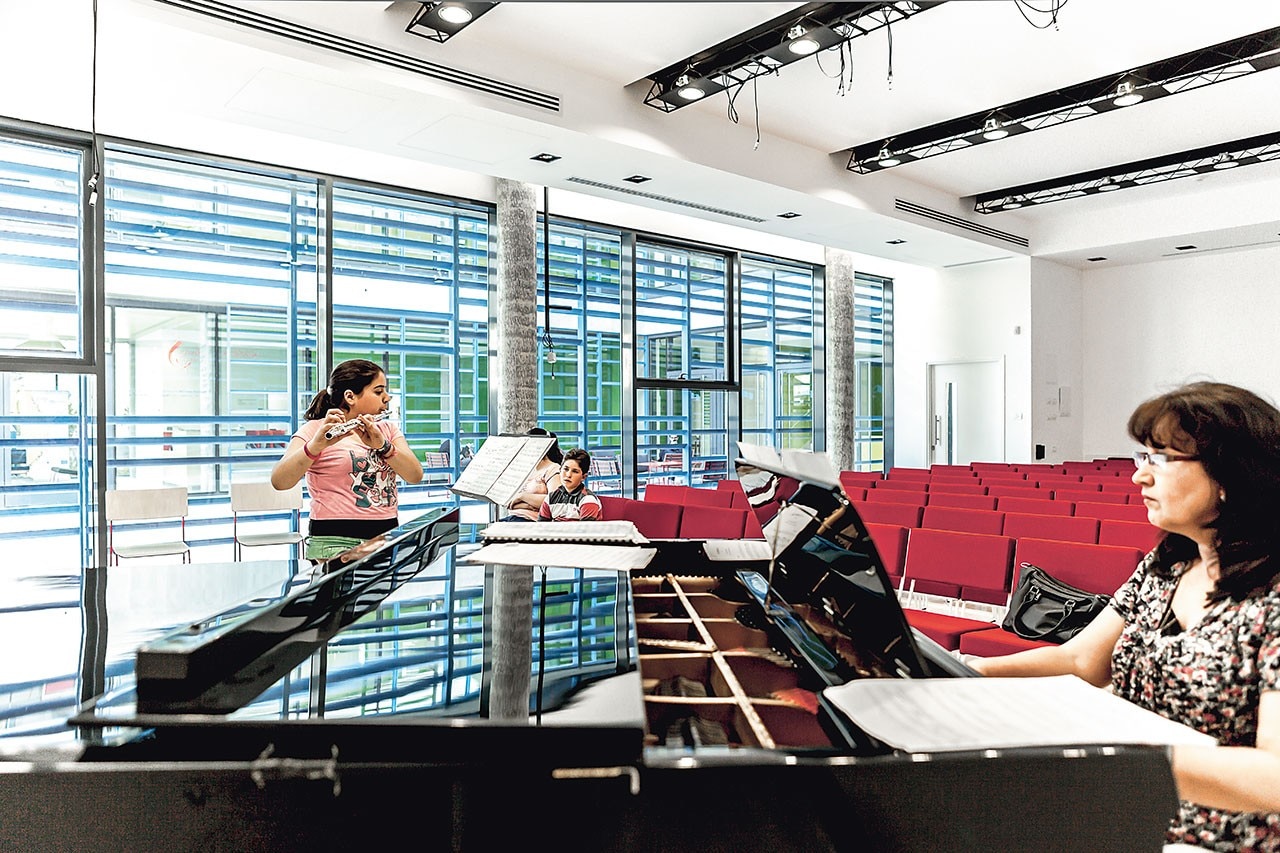
In the conservatory, the arrangement of its volumes is governed and organised around a rectangular central patio. One side of this new hosh is left deliberately wide open to the city: a variation of the classic version intended to place greater emphasis on its status as a modern public institution.
This wide opening is accentuated thanks to the city council’s construction of a pedestrian shopping street as suggested by the architects. An outdoor souk, it forms a wave of public space that works its way into the dense city centre. The diverse volumes are given unity through the use of local stone, in much the same way as occurs in all Palestinian cities in compliance with an old Ottoman regulation that dictated the use of stone for cladding.
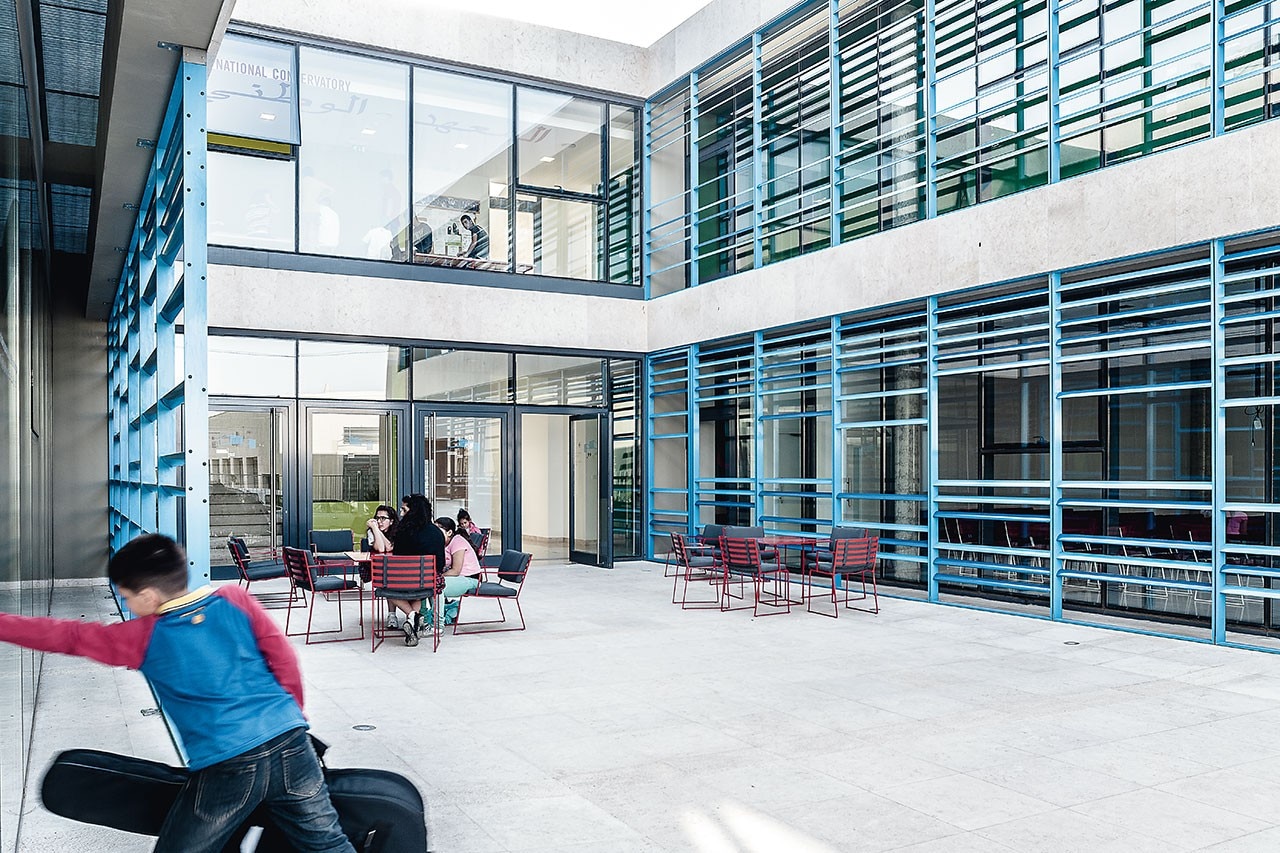
However absurd this restraint may sound, in reality this building choice today constitutes the best quality of Palestinian urban space. The stone cladding in fact produces a unified image that fits in perfectly with the colours and consistency of the surrounding landscape. The conservatory’s ample glazed surfaces, on the other hand, break away from a traditional use of materials to highlight the building’s public dimension. Students playing their instruments can be seen directly from the street through these large windows, thus presenting a public view of the school’s activities. On hot summer evenings, meanwhile, the centralm patio can easily be converted into an open-air concert hall.
The construction site was transformed into a place of collective creation, with artisans, bricklayers and the building contractor working together in situ to identify solutions that could be produced locally. A clear example are the simple seats, chairs and tables, made by a craftsman whose workshop is situated in one of the city’s refugee camps.
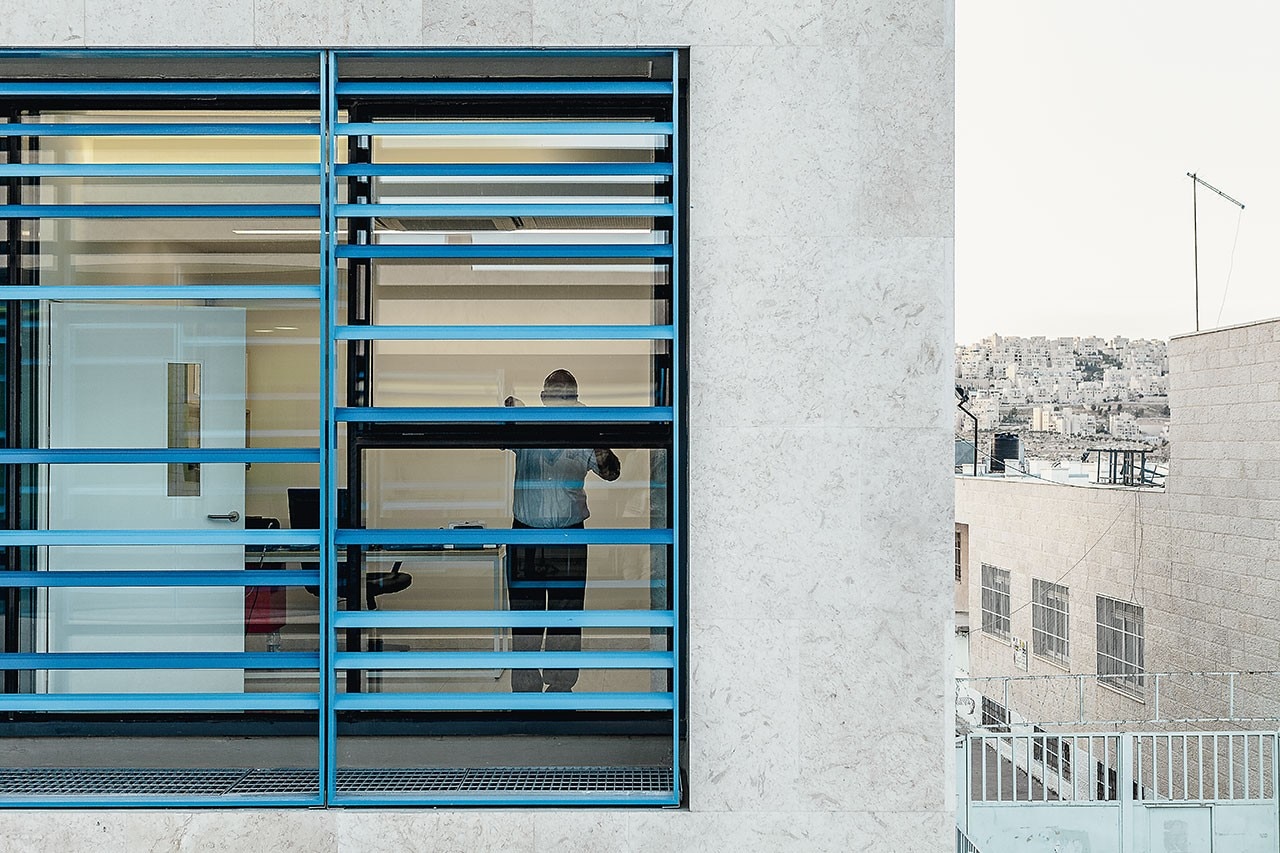
I met the architect Elias Anastas a couple of times to hear all about the origins and evolution of the project. Elias is part of a new generation of Palestinian talents who find themselves at ease between the hyper-localism of their homeland and the far-flung Palestinian diaspora. I find such figures particularly interesting, because they have opted to follow neither internationalist fashions nor bogus localisms. They know how to bring different worlds into tension without flattening them out, without trivialising them as a caricature for easier global consumption.
On the contrary, by complicating and making an issue of connections and differences, they arrive at original expressions. Edward Said, after whom the conservatory is named, was among the few intellectuals with the capacity to combine a passionate political commitment to the liberation of the Palestinian people with a rigorous intellectual output, not subjected to political ideologies yet intrinsically political.
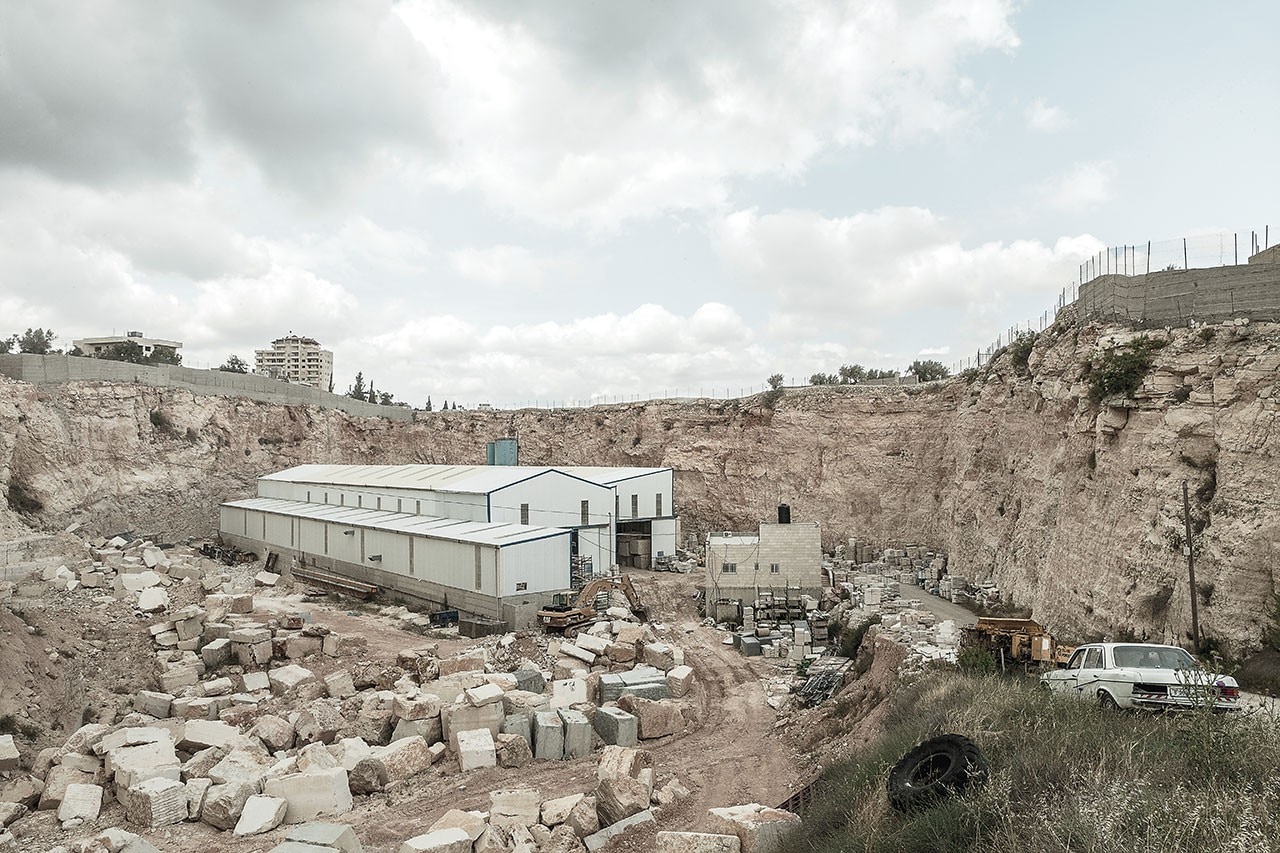
Said was also among the few to assert the need not to let art, music and literature succumb to brutal colonial and military repression. Thus, despite a never interrupted “spaciocide”, a term coined by the Palestinian sociologist Sari Hanafi to describe the voluntary and planned destruction and elimination of the space in which a population lives, and whose ultimate manifestation is the construction of an eight-metre-high concrete wall completely surrounding Bethlehem, the conservatory project attempts patiently, “pessi-optimistically” and far-sightedly to reconstruct an idea of contemporary public space.



